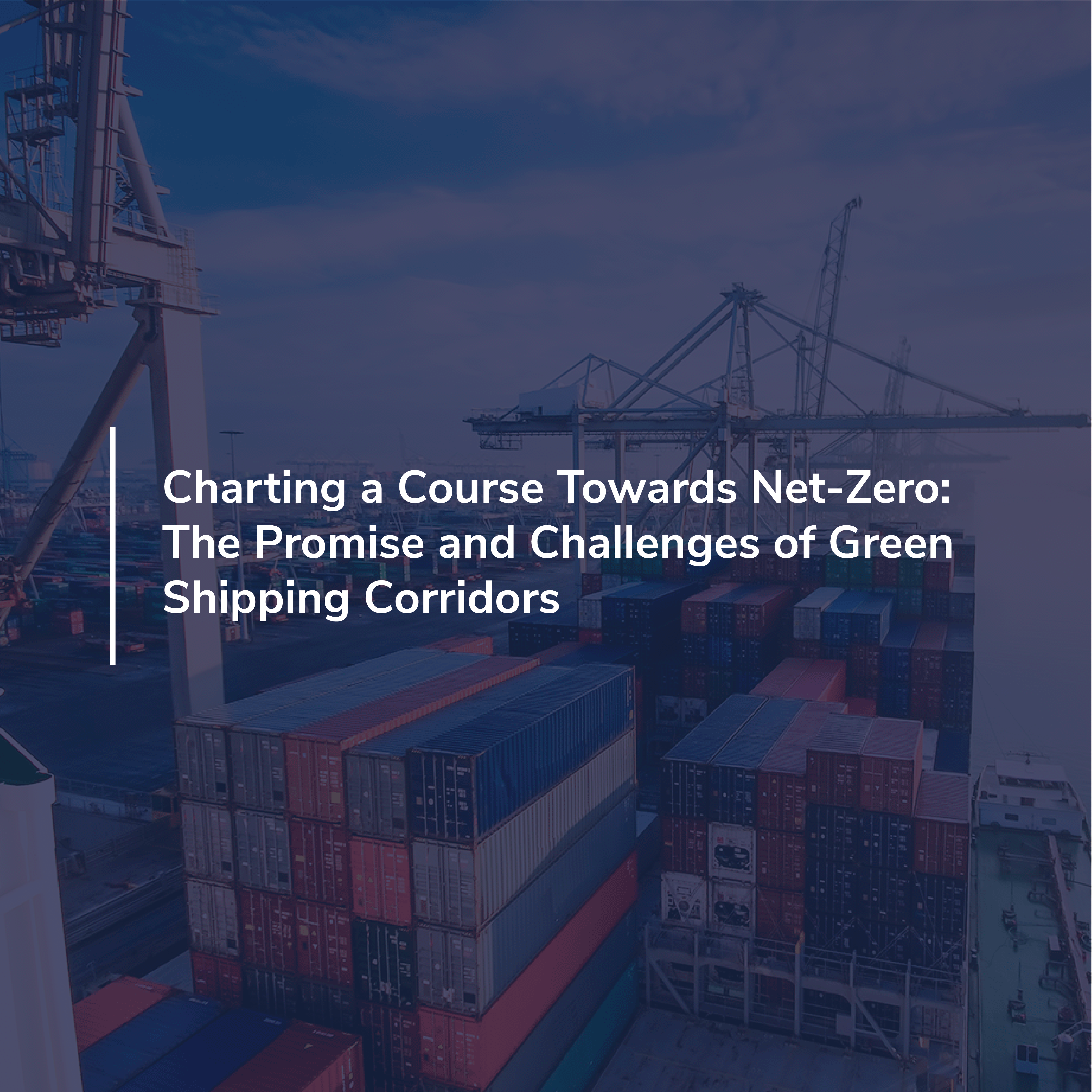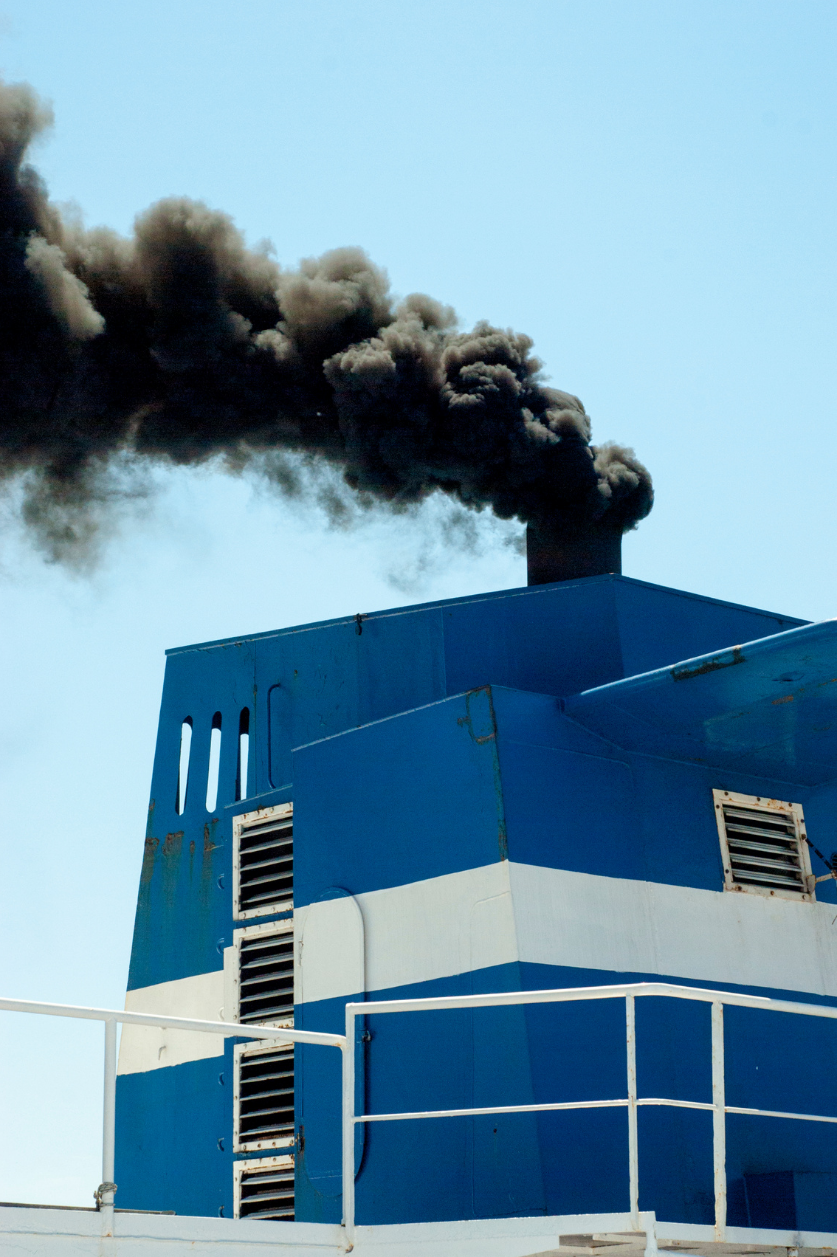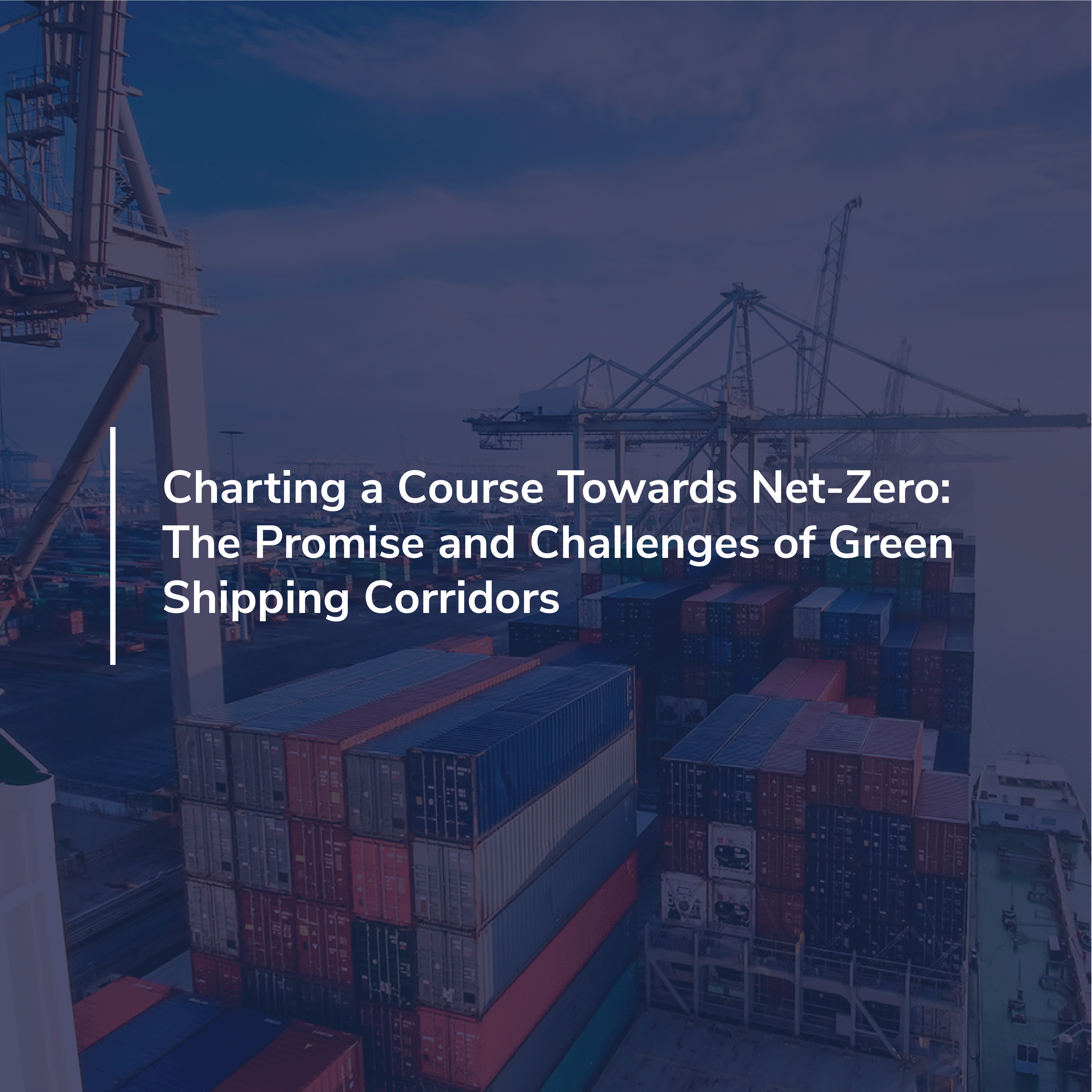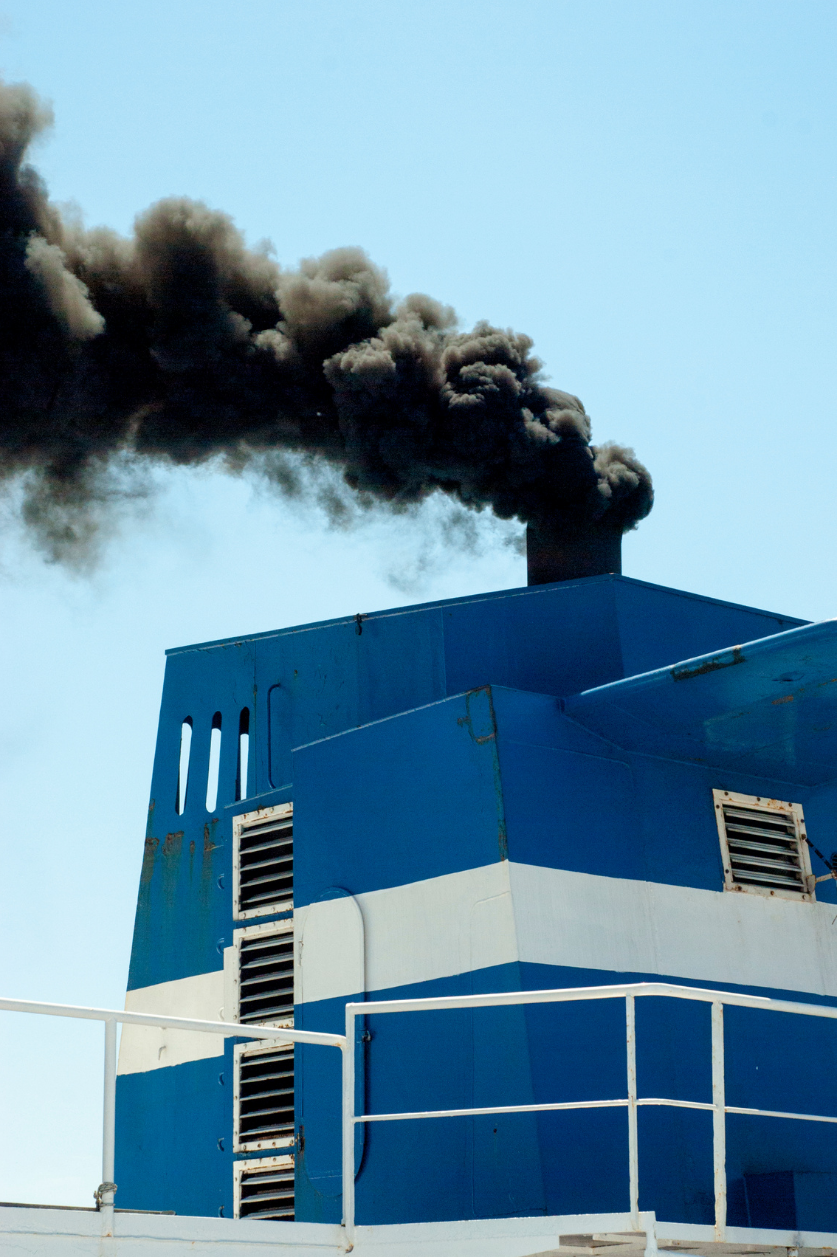“This transpacific green corridor will be a model for the global cooperation needed to accelerate change throughout the maritime industry. Reducing emissions in this corridor will yield significant reductions. For perspective, most of the emissions associated with moving cargo by ship occur in the mid-ocean part of the journey between ports. This corridor will help reduce mid-ocean emissions while continuing the work we have done to cut emissions within our ports” - Gene Seroka, Executive Director of the Port of Los Angeles
- Transpacific shipping routes serve as vital lanes for some of the globe's biggest shipping giants.
- Imagine these routes as low-emission corridors, paving the way for net zero.
- The Shanghai-Long Beach corridor is a visionary concept that holds immense promise for green shipping. According to this prefeasibility study, this corridor demonstrates a remarkable potential for success.
- Yet, to unlock this potential, there's a need for concerted efforts. Key stakeholders must collaborate and coordinate activities beyond current levels.
In 2020, a total of 25 million twenty-foot equivalent units (TEUs) of cargo was transported across transpacific routes.
During the same period, 31.2 million TEUs were transported across the Pacific Ocean. This accounts for a remarkable 21% of the world's container movement. (As reported during the United Nations Conference on Trade and Development.)
Since 2020, cargo volumes on transpacific routes have seen a 15% increase, according to the IMO.
This data underscores the critical role played by the Ports of Los Angeles, Long Beach, and Shanghai.
These ports serve as crucial hubs for some of the world's largest shipping lines.
As such, connecting these ports via a green corridor could result in meaningful emission reductions in maritime trade. And the proposed Shanghai-Longbeach green corridor perfectly aligns with this objective.
“This [green corridor] initiative will drive emissions reductions across the world’s largest ocean and lead to greener practices from supply chain participants along these vital trade routes. The new and innovative vessel technologies, increased availability of sustainable fuels and better practices created through this green corridor will also impact society’s transition to a cleaner future far beyond the areas served by our ports” - Mario Cordero, Chief Executive Officer of the Port of Long Beach
This Pole Star Global article aims to evaluate the viability of the Shanghai-Long Beach Corridor. The goal is to highlight key areas of focus to expedite the corridor's success. To dive into the heart of the matter, the Shanghai-Long Beach corridor analysis unfolds across the following areas:
- Ships: Key Carrier Partners Are Investing in a Green Fleet
- Ports: Investing in Infrastructure for Net-Zero Fuels and Value Chain Decarbonisation
- Navigating the Fuel Pathway: Inconsistencies Among Key Stakeholders
- AI Is Proving Invaluable When It Comes to Ship Management and Route Optimisation
- Key Recommendations From the Shanghai-Longbeach Green Corridor
Ships: Key Carrier Partners Are Investing in a Green Fleet
For any green corridor to thrive, it needs the unwavering support of key stakeholders. This begs the question: Does the Shanghai-Long Beach corridor rally this support?
It appears that stakeholders are becoming more united in their dedication to decarbonisation. Yet, to truly understand the depth of this commitment, it's essential to evaluate each key carrier partner trading along this route.
Notable carrier partners include:
- CMA CGM,
- COSCO Shipping Lines Co Ltd,
- Maersk,
- Ocean Network Express (ONE),
- Eastern Pacific Shipping (EPS),
- Exmar.
The following section investigates what each key carrier partner is doing today, to create a greener tomorrow.
Maersk Invests in a Range of Technologies to Bolster Its Green Fleet
- E-Methanol:
- Maersk is pouring significant investments into crafting a future fleet powered by e-methanol.
- By teaming up with European Energy, Maersk is expediting the production of e-methanol. 25 cutting-edge e-methanol vessels have been deployed to replace their older counterparts. This project is set to slash 3 million tonnes of greenhouse gas (GHG) emissions from operations.
- Ammonia:
- Maersk is conceptualising the design for a 15,000 TEU container vessel powered by ammonia fuels.
- This is a collaborative effort with ship designer Foreship and the Classification Society American Bureau of Shipping (ABS).
- Wind-Assisted Technology:
- Maersk is retrofitting product tanker vessels with not one, but two colossal Norsepower Rotors. These rotors tower at 30 meters in height and boast a diameter of 5 meters each. Each functions as a sail, resulting in a 7-10% reduction in greenhouse gas (GHG) emissions.
- Shore Power Systems:
- Maersk is gearing up to roll out a fleet of offshore electric-powered charging stations at the ports.
- This effort aims to mitigate emissions from its fleet of approximately 3,500 fossil-fueled ships.
- The goal is to target 100 ports by 2028, contributing to a reduction of 5 million tons of carbon emissions.
- LNG Scepticism:
- LNG is considered a green fuel alternative by some reports. Yet, Maersk has expressed scepticism regarding the fuel's environmental credentials.
CMA CGM Collaborates With Maersk to Speed to Transition Toward Net Zero
- Hydrogen:
- CMA CGM has allocated £11.8 billion for fleet decarbonisation. Central to this effort, CMA CGM is exploring the development of hydrogen-powered vessels.
- LNG:
- CMA CGM is adding a touch of innovation to its fleet with the acquisition of LNG-propelled vessels. These ships are designed to harness the power of bio-methane - a much greener alternative to traditional LNG.
- Methanol:
- CMA CGM has placed orders for vessels running on e-methanol.
- This initiative is the fruit of a strategic alliance with Maersk, showcasing effective stakeholder collaboration in action.
- Ammonia:
- CMA CGM’s recently built Masai Mara is a flagship among six ammonia-ready containerships constructed in China. Yet, more work is needed to enable this vessel to operate using ammonia fuel by 2024.
- Wind-Assisted Technology:
- CMA CGM continues to heavily invest in wind-assisted propulsion.
- Illustrating this, the company has supported the creation of a wind-assisted vessel designed by Neoline Armateur in France.
- Shore Power Systems:
- All new vessels come pre-equipped with shore power. This ensures seamless compatibility with ports as they gear up their infrastructure for the future.
COSCO Shipping Lines Co Ltd Embarks on a Journey Towards
Sustainable Shipping
In COSCO's 2021 sustainability report, intentional investment in low-carbon, zero-emission fuels is notably absent. Instead, the business:
“...actively explores high-quality use of fuel oil, monitors the use of fuel oil, implements fuel-saving measures, conducts shore power transformation, and sets scientific goals of reducing fuel oil to improve the effectiveness of fuel oil management and control”.
Yet, in December 2023, COSCO achieved a major milestone. The company presented its inaugural green shipping certificate at Volvo's Asia Pacific headquarters. This prestigious recognition hailed COSCO's pioneering use of the eco-friendly biofuel, Hi ECO. And Volvo proudly took the lead as the very first customer to sign up for COSCO's lower-emission services. But COSCO's commitment to sustainable shipping doesn't stop there. Initiatives to create a green fleet of vessels are outlined below.
- LNG:
- In September 2023, COSCO took a significant step in sustainable shipping. The company penned a Letter of Intent, marking the beginning of an ambitious project to decarbonise its fleet.
- Ammonia:
- COSCO is actively involved in the development of an ammonia fuel supply system in China.
- Methanol:
- COSCO is on a journey to retrofit some of its container ships for methanol propulsion.
- Wind-Assisted Technology:
- COSCO has teamed up with Anemoi Marine Technologies, a leading UK provider of Rotor Sails for the maritime sector. This partnership is set to pioneer cutting-edge wind propulsion technology services.
- Shore Power Systems:
- COSCO reports vessels are already equipped with integrated technical components for shore power supply.
ONE's Future Green Fleet Powered by e-Ammonia and e-Methanol
Ocean Network Express (ONE) acknowledges its responsibility in a high-emission sector. As such, the company invests in cutting-edge green technology solutions for a reduced carbon footprint. For instance, ONE has embraced digitalisation to enhance operational efficiency. This forms the backbone of a dynamic five-step roadmap encompassing carbon management, green investments, alternative fuels, and ecosystem development.
Listed below are the investments ONE is making to create a green fleet of vessels.
- Ammonia and Methanol:
- ONE has invested in zero-emission vessels designed to run on e-ammonia and e-methanol. Expected to be operational by 2025, these vessels are a testament to ONE's pursuit of more sustainable shipping practices.
- Hydrogen:
- ONE's CEO, Jeremy Nixon, expresses a preference for ammonia and methanol as green fuels over hydrogen.
- Wind-Assisted Technology:
- In a move toward sustainable propulsion, ONE has ordered two containerised wind-assisted units from Econowind. These units will assist in propelling one of its vessels, with trials set to commence in 2024.
- Shore Power Systems:
- ONE has chartered two container crafts designed by the Shanghai Ship Research and Design Institute. The vessels are equipped with a medium-voltage shore power device, allowing them to plug into available shore power.
EPS Welcomes Its First Dual-Fuel Vessels With LNG and Battery Innovation
- LNG:
- Eastern Pacific Shipping(EPS) is a ship management company headquartered in Singapore. The company welcomes its first dual-fuel-powered vessel, capable of seamlessly switching between LNG and battery power.
- Ammonia:
- In an exciting collaboration, EPS is at the forefront of developing an innovative ammonia-fueled engine set to power its upcoming fleet of vessels.
- Methanol:
- EPS is currently researching methanol-based fuel options. The aim is to build new ships equipped with engines that are compatible with e-methanol.
Exmar Claims to Have Pioneered LNG Ship-To-Ship Transfers Operations
- Ammonia:
- Exmar is poised to achieve a historic milestone as the first shipowner globally to receive delivery of ammonia-powered ships, scheduled for 2026.
- LNG:
- Exmar has successfully operated LNG carriers for over 35 years. The business claims to have pioneered LNG ship-to-ship (STS) transfer operations.
Ports: Investing in Infrastructure for Net-Zero Fuels and Value Chain Decarbonisation
The ambitious plans for the Shanghai-Longbeach green corridor have gained the backing of the influential C40 Cities. (The C40 is a global coalition of mayors dedicated to achieving net zero emissions.)
This powerful collaboration is important for the exchange of best practices and the collective pooling of resources.
“C40 is proud to support this first-of-its-kind green shipping corridor aimed at demonstrating that zero-carbon shipping at scale is feasible by 2030 and that less polluting ships and ports will also mean cleaner air, less noise and more jobs for local communities” - Mark Watts, Executive Director of C40
Pivotal port terminals along this corridor need to enhance their technological infrastructure to drive the widespread adoption of green shipping and the integration of low or zero-carbon fuels. Key partners to consider here are the Shanghai International Port (Group) CO Ltd, the Port of Los Angeles, and the Port of Long Beach.
The Shanghai International Port Invests in E-hydrogen and Rolls Out Renewable Energy Infrastructure
China is boldly leading the charge in the global push for greener shipping. The country aims to construct over half of the world's green ships by 2025. Consequently, the Shanghai International Port is backed by strong governmental support to turn net zero into reality.
The Shanghai International Port Group (SIPG) is spearheading the shift to net-zero fuels through innovative refuelling and supply systems. Initiatives include:
- Swapping oil for electricity and gas.
- Upgrading port machinery equipment.
- Rolling out renewable energy infrastructure, including shore-based and photovoltaic power.
These initiatives have significantly reduced carbon emissions at container terminals. Specifically, emissions have been reduced from 440,000 tons of CO2e in 2020 to 326,000 tons of CO2e in 2022. Per TEU, emissions have decreased from 10.1 kg of CO2e to 6.9 kg of CO2e.
Furthermore, SIPG has made substantial investments in infrastructure to bolster LNG refuelling options. So far, a total of 57 refuelling operations, amounting to 317,000 cubic metres, were completed at the end of September 2023.
Expanding its green fuel initiatives, the Port of Shanghai is spearheading the development of methanol refuelling services for international navigation ships. Teaming up with ship carrier Maersk, SIPG is at the forefront of the methanol marine fuel project. As part of this collaboration, SIPG offers ship-to-ship bunkering and fuel tank storage services at the port.
Moreover, Shanghai has released medium and long-term plans to support hydrogen energy from 2022 to 2035. These plans include the creation of an international hydrogen energy demonstration port, coupled with the expansion of shoreline hydrogen refuelling facilities. The aim is to accelerate the commercial application of e-hydrogen fuels in the maritime industry.
Information on SIPG's participation in e-ammonia initiatives is scarce in the public domain.
Port of Long Beach and Los Angeles Embrace Hydrogen and LNG Green Fuels
The Port of Long Beach has partnered with the Alliance for Renewable Clean Hydrogen Energy Systems (ARCHES), drawing upon federal funding to catalyze the growth of the e-hydrogen market across California. Investments are directed towards cutting-edge hydrogen technologies. The focus is to establish dynamic local and regional hydrogen hubs. These hubs will be pivotal in advancing hydrogen-powered shipping endeavours.
The above showcases the Port of Long Beach's commitment to facilitating the energy needs of ships docked at its terminals. Yet, there's a noticeable absence of investment in e-ammonia and e-methanol fuels.
In terms of LNG, the Port of Long Beach is championing this sustainable shipping fuel. Earlier this year, the port marked a significant milestone by becoming the first West Coast seaport equipped to refuel ships with liquefied natural gas (LNG).
Another noteworthy initiative: Long Beach is embarking on an ambitious journey to transition to all zero-emissions cargo-handling equipment by 2030. Plus further plans are in place to operate a zero-emission drayage truck fleet by 2035. These bold initiatives underscore the port's steadfast commitment to reducing emissions throughout its entire value chain.
The Port of Los Angeles is following in the footsteps of its neighbouring Port of Long Beach with ambitious plans for the future. In a recent announcement in October 2023, the port revealed its participation in one of seven designated “Hydrogen Hubs”. This initiative comes with a significant financial boost of $1.2 billion from the U.S. Department of Energy. The aim is to spearhead the integration of hydrogen fuel for the movement of goods. This transformative investment also demands the deployment of hydrogen fuel cell cargo-handling equipment and mobile hydrogen fueling trucks or stations within the port's terminals. By embracing green hydrogen, Los Angeles solidifies its position as one of the largest bunkering hubs globally. This paves the way for more sustainable shipping practices on a global scale.
Navigating the Fuel Pathway: Inconsistencies Among Key Stakeholders
The infrastructure at Shanghai and Long Beach Ports stands ready to usher in a new era of hydrogen-powered shipping. Carriers operating on this route are encouraged to consider investing in hydrogen propulsion. In doing so, they'd follow the example set by CMA CGM and Maersk.
However, a noticeable gap emerges in the available infrastructure for other alternative fuels. This is evident as major shipping carrier Maersk highlights port infrastructure is yet to meet the refuelling needs of methanol-powered vessels. Despite collaborative efforts with SIPG, the Ports of Long Beach and Los Angeles currently lack the necessary infrastructure to support Maersk's methanol-powered fleet.
“The availability of methanol worldwide for the chemical industry is excellent, with bunkering for smaller vessels via land-based logistics available, i.e. trucks. Yet, bunkering for larger vessels is virtually non-existent.” - Sustainable Ships, The State of Methanol as a Marine Fuel in 2023
Plus, there's a significant lack of discourse on the refuelling infrastructure required to facilitate the adoption of e-ammonia. This is concerning, given the increasing number of shipping companies incorporating ammonia-powered vessels. It's evident that these ships currently lack support at critical port terminals along this corridor.
It seems ship carriers and port authorities haven't agreed on a single fuel pathway. This could slow progress if this isn't addressed.
AI Is Proving Invaluable When It Comes to Ship Management and Route Optimisation
Voyage optimisation ensures vessels navigate to their destination more efficiently. While this practice is crucial for reducing fuel consumption, note that this process alone will not yield net zero. Yet, used alongside alternative green fuels, voyage optimisation facilitates a smooth net zero transition by decreasing fuel consumption from the start.
And in the realm of voyage optimisation, Artificial Intelligence (AI) is reshaping ship management as we know it.
AI serves as a cornerstone in refining route planning. For one, AI can boost fleet performance through intuitive dashboards and detailed reports. This offers readily accessible performance metrics, with key insights for emission reduction, and predictive analytics.
With these AI-driven solutions, ship carriers can attain goals such as:
- Punctual arrivals,
- Optimised port calls,
- Reduced EU ETS exposure,
- Weather-informed routing,
- Real-time keel clearance adjustments.
As such, fostering partnerships with AI firms and key stakeholders along the
Shanghai-Longbeach corridor will be instrumental in advancing the net-zero objectives of this route. With this in mind, Pole Star Global's Podium5 will serve as a promising solution for the Shanghai-Longbeach corridor and beyond.
Podium5's cutting-edge platform provides weather routing and route optimisation services. Utilise Podium5's smart automation and expert advice and be empowered to make informed decisions to reduce fuel use.
Podium5 excels at enhancing shipping time and TCE (Time Charter Equivalent), all while minimising fuel consumption and emissions. The platform revolutionises planning processes and ensures precise Estimated Time of Arrivals (ETAs) for every journey.
Podium5 is here to support your net zero goals. For more information on how you can action voyage optimisation practices, request a demo here.
Key Recommendations From the Shanghai-Longbeach Green Corridor
This prefeasibility has assessed the Shanghai-Long Beach green corridor. From this assessment, the pivotal role of effective stakeholder communication is highlighted. With aligned targets and ongoing collaboration, the shipping industry can reach its 2050 net zero goals.
The success of a chosen green fuel pathway is critical to achieving this goal. Yet, the Shanghai-Long Beach corridor must first determine this fuel pathway. Ship carriers and ports must be aligned here, to provide essential and complementary infrastructure. Presently, carriers along this route are investing in a diverse range of alternative green fuels. Yet, the interconnected ports primarily endorse hydrogen and LNG.
Armed with this insight, we propose five recommendations to ensure the success of the Shanghai-Long Beach green corridor:
- Engage and collaborate with key stakeholders now. Leverage ongoing technology and infrastructure development, but ensure ships and ports are aligned.
- Utilise national policy to bridge the fuel cost gap for zero-emission shipping.
- Define a fuel pathway of choice, agreed upon by major stakeholders, including ship carriers and ports.
- Emphasise learning by doing.
- Transition to employing supportive AI and software for enhanced voyage optimisation.
Collaboration across the entire value chain is paramount, involving ports, cargo owners, fuel producers, ship carriers, and vessel operations, all united in their commitment to achieving net-zero emissions. Policymakers can explore targeted changes to incentivise zero-emission shipping along this corridor. With stakeholders rallying around a credible plan, the Shanghai-Long Beach green corridor can significantly contribute to global progress toward achieving net-zero emissions.





